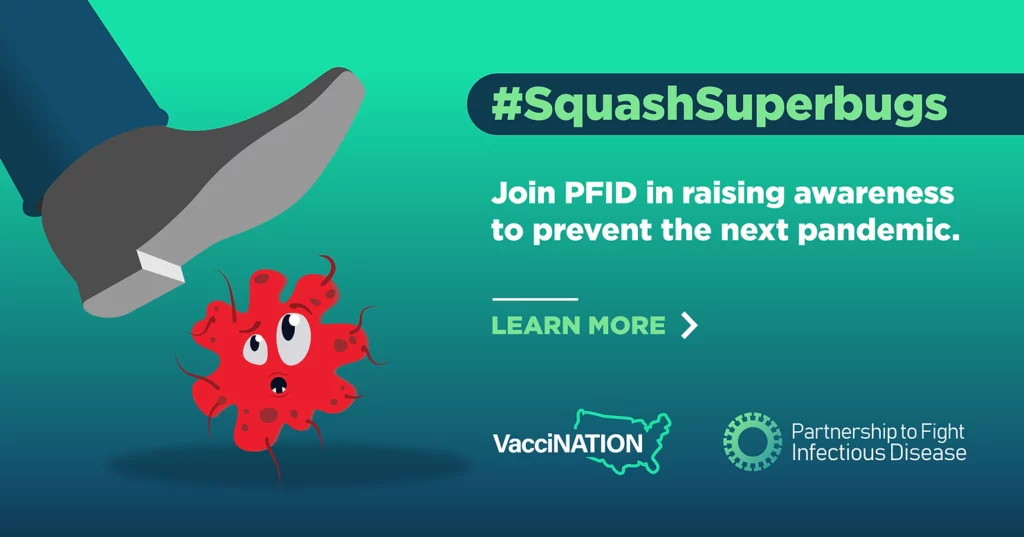Tuesday Report

From Washington, DC
Capitol Hill News
- The Wall Street Journal reports,
- The House [of Representatives] narrowly approved a Republican proposal to fund the government into the fall, as GOP lawmakers remained largely united following a last-minute push from the White House, overcoming Democratic opposition and setting up a fight in the Senate.
- Funding for the federal government expires this weekend. The GOP proposal would extend funding through Sept. 30 at fiscal 2024 spending levels, but it includes $13 billion in cuts in nondefense spending and $6 billion in increased military spending. It allocates additional money for border enforcement and forces Washington, D.C., to cut $1 billion from its budget.
- The measure passed 217-213, with Rep. Thomas Massie of Kentucky being the only Republican to vote against it. Democrats were largely united in opposition, with one Democrat, Rep. Jared Golden of Maine, voting yes. * * *
- “The matter now heads to the Senate, where Republicans will need Democratic support to advance the bill. Senate Democrats were wrestling over the matter Tuesday. Some saw the funding deadline as their only leverage to push back against GOP efforts to dismantle federal programs, while others were wary of playing hardball and triggering a government shutdown.
- The House left town after Tuesday’s vote, effectively giving the Senate the option of approving or blocking the House measure—but not revising it.”
- Fierce Healthcare adds,
- “Rep. Greg Murphy, M.D., R-N.C., posted on X Monday night that Johnson and Senate Majority Leader John Thune have agreed to include a doc pay fix in Congress’ budget reconciliation, which is expected to be finished in May to align with President Donald Trump’s first 100 days.
- “A doc pay fix, which would counteract a 2.83% cut to Medicare physicians’ payment rates that went into effect Jan. 1, has been a central focus for provider lobbying groups as well as for physician members of the legislature. It was seen as the driving force behind passing an expanded healthcare package.
- “The Energy and Commerce committee has an $880 billion deficit reduction target. E&C will identify those cuts from programs within its jurisdiction like Medicaid and other healthcare programs. It could identify some of those savings from items in the December healthcare package that did not make it into last year’s funding bill, such as PBM reform.”
- Per Govexec,
- “Also on Tuesday, Sen. Jerry Moran, R-Kan., who chairs the Senate Veterans Affairs Committee, announced during a hearing he will put forward legislation that will also seek to put some constraints on the Trump administration’s efforts to remake the Veterans Affairs Department’s workforce. He said VA must work closely with Congress and stakeholders such as veterans service organizations when seeking to make staffing cuts. The Republican chairman added he has voiced his reservations to VA Secretary Doug Collins.”
HHS News
- The Washington Post reports,
- Robert F. Kennedy Jr. is making one of his first official moves aimed at increasing oversight of the chemicals found in the nation’s food supply — a key component of his “Make America Healthy Again” agenda to root out chronic disease and childhood illness.
- On Monday, Kennedy, who serves as the nation’s top health official, announced he was directing the Food and Drug Administration to “explore potential rulemaking” to tighten a decades-old loophole allowing food companies to put chemicals in their products without notifying the nation’s food regulators.
- The practice Kennedy is targeting, known as “generally recognized as safe” (GRAS), can occur when companies self-certify the safety of a food additive. Companies aren’t required to tell the FDA when they include some chemicals and substances in their products, meaning there are probably hundreds of such ingredients added to the food supply without government oversight.
- Per a March 10, 2025, CMS news release,
- “Today, the Centers for Medicare & Medicaid Services (CMS) released a proposed rule to address the troubling amount of improper enrollments impacting Affordable Care Act (ACA) Health Insurance Marketplaces across the country. CMS’ 2025 Marketplace Integrity and Affordability Proposed Rule includes proposals that take critical and necessary steps to protect people from being enrolled in Marketplace coverage without their knowledge or consent, promote stable and affordable health insurance markets, and ensure taxpayer dollars fund financial assistance only for the people the ACA set out to support.” * * *
- “View the 2025 Marketplace Integrity and Affordability Proposed Rule (CMS-9884-P) here: https://www.cms.gov/files/document/MarketplacePIRule2025.pdf
- “For additional information on the rule and its proposals, view the CMS fact sheet: https://www.cms.gov/newsroom/fact-sheets/2025-marketplace-integrity-and-affordability-proposed-rule”
- Per Modern Healthcare,
- “The U.S. Department of Health and Human Services increased its voluntary buyout offer for some employees for further layoffs this week as the agency faces pressure to reduce headcount, according to an email viewed by Bloomberg.
- “In addition to a $25,000 lump-sum buyout offer, some HHS workers would also receive around two months of paid administrative leave if they chose to accept the buyout. * * *
- “The buyout offer was available to employees this week and expires Friday. The original buyout offer was extended to a “broad population of HHS employees,” according to an email. However, the Food and Drug Administration told staff Monday that employees responsible for reviewing drugs, medical devices and tobacco products aren’t eligible for the buyout program.
- “The HHS buyout offers are in addition to an early retirement program that relaxed service requirements for retirement.”
- The U.S. Preventive Services Task Force issued a final recommendation on screening for food insecurity which received an inconclusive “I” grade.
- “For children, adolescents, and adults:
“The USPSTF concludes that the current evidence is insufficient to assess the balance of benefits and harms of screening for food insecurity on health outcomes in the primary care setting.”
- “For children, adolescents, and adults:
- Per Axios,
- “The federal government’s free at-home COVID test distribution program has been suspended and is no longer accepting orders” as of March 9, 2025.
- “For some previously distributed tests, expiration dates were extended to account for data that revealed a longer-than-expected shelf life.
- “A full list of approved tests and their revised expiration dates is posted on the FDA website.”
FDA News
- Per Cardiovascular Business,
- “Google has received U.S. Food and Drug Administration (FDA) for Loss of Pulse Detection, a new smartwatch feature that detects when a person’s heart stops beating and then automatically alerts emergency services.
- “Loss of Pulse Detection asks the user if they are OK when it first detects the loss of pulse. If no response is provided, it triggers an audio alarm and countdown to when emergency services will be notified. If the countdown reaches zero, the alert is officially sent out.
- “This feature is already available in 14 different countries. It will be made available in the United States for Google’s Pixel Watch 3 in the weeks ahead.”
- Per Modern Healthcare,
- “Siemens Healthineers has received clearance from the Food and Drug Administration for its Naeotom Alpha class of photon-counting computed tomography scanners.
- “The company unveiled the two scanners in December, touting the Naeotom Alpha.Pro and Naeotom Alpha.Prime as more affordable options to its original Naeotom Alpha photon-counting CT, which received FDA clearance in September 2021.
- “Photon-counting CT is a new technology that uses lower radiation doses than conventional CT and produces clearer images with fewer distortions.
- “Siemens Healthineers’ photon-counting CTs are the only commercially available scanners of their kind available for clinical use but competitors are working to bring their versions to market.”
From the judicial front,
- Govexec reports,
- “A federal judge has ordered the acting head of the Office of Personnel Management to testify at a court hearing examining the legality of the Trump administration’s mass firings of federal employees, but the key workforce official has informed the court he will ignore the order.
- “Acting OPM Director Charles Ezell was slated to appear in a U.S. District Court in San Francisco on Thursday after Judge William Alsup ruled Monday on Monday that he must do so, but he will now face a to-be-determined sanction. The Trump administration had sought to block his testimony, saying it would raise constitutional concerns, but the judge rejected the argument. Ezell has already submitted written testimony, Alsup said, and now must be subject to cross examination.
- “After initial publication of this story, the Trump administration Tuesday evening informed the court Ezell would not testify and withdrew his written declaration suggesting he did not order the probationary firings across government. It called live testimony “not necessary” for Ezell or any other official. The plaintiffs in the case are seeking testimony from human resources personnel throughout government.”
From the public health and medical research front,
- Healio lets us know,
- “The diabetes mortality rate in the U.S. dropped from 28.1 deaths per 100,000 people in 2000 to 19.1 deaths per 100,000 in 2019.
- “Reductions in diabetes mortality were observed for all racial and ethnic groups.”
- The Wall Street Journal reports,
- “GLP-1s, including Ozempic, show promise in preventing age-related conditions like Alzheimer’s, osteoarthritis and certain cancers.
- “GLP-1s work by suppressing appetite and reducing inflammation, potentially contributing to their preventive health benefits.
- “While promising, more robust studies are needed to confirm the causal effects of GLP-1s on longevity and healthspan.”
- The National Institutes of Health offers a research bulletin on the following topics: “Predicting preeclampsia | Liver gene editing | Mapping MS-like brain lesions.”
- MedPage Today tells us five things that patients with low back pain need from their doctors and
- “BMI was lower in kids whose mothers received a responsive parenting intervention in the INSIGHT randomized clinical trial.
- “Across ages 3 to 9 years, children in a responsive parenting group had a lower mean BMI than those in a control group.
- “The impact appeared significant only for girls.”
- Per a news release,
- “The Institute for Clinical and Economic Review (ICER) announced today that it will assess the comparative clinical effectiveness and value of brensocatib (Insmed Incorporated) for the treatment of non-cystic fibrosis bronchiectasis (NCFB).
- “The assessment will be publicly discussed during a meeting of the CTAF in September 2025, where the independent evidence review panel will deliberate and vote on evidence presented in ICER’s report.
- “ICER’s website provides timelines of key posting dates and public comment periods for this assessment.”
- The National Cancer Institute informs us,
- “For men with metastatic castration-resistant prostate cancer, an initial treatment that combines enzalutamide (Xtandi) and talazoparib (Talzenna)may help them live longer than just getting enzalutamide alone, according to updated results from a large clinical trial. Enzalutamide is a type of drug known as an androgen receptor antagonist and talazoparib is part of a group of drugs called PARP inhibitors.” * * *
- “More information about the trial, which was funded by Pfizer, the maker of talazoparib, is available in this Cancer Currents story.”
- Fierce Pharma adds,
- “After Gilead Sciences’ lenacapavir made waves with stellar clinical results as a twice-yearly HIV prevention candidate, the drug has shown promise being dosed even further apart at only once a year.
- “Two different once-yearly formulations of lenacapavir achieved blood concentrations that exceeded those associated with the strong HIV prevention efficacy that twice-yearly lenacapavir showed in phase 3 preexposure prophylaxis (PrEP) studies.
- “The pharmacokinetic results came from a small phase 1 trial presented at the Conference on Retroviruses and Opportunistic Infections and simultaneously published in The Lancet.
- “Based on the early-stage data, Gilead plans to start a phase 3 program for once-yearly lenacapavir in the second half of this year, with the potential for regulatory filings in 2027, Jared Baeten, M.D., Ph.D., Gilead’s vice president of HIV clinical development, told Fierce Pharma.”
From the U.S. healthcare business front,
- Modern Healthcare reports,
- “Hinge Health filed Monday for a proposed initial public offering.
- “The virtual musculoskeletal health company, which contracts with employers, pharmacy benefit managers and large insurance companies to provide physical therapy and pain relief services, has been considered a potential IPO candidate since last year.”
- and
- “Tampa General Hospital and Mass General Brigham are teaming up to open a radiation oncology center in Florida.
- “The 10,000-square-foot facility in Palm Beach Gardens will be co-branded and jointly owned. Tampa General will handle daily operations, while Mass General Brigham will provide oversight on quality and safety, according to a Tuesday news release.
- “The center is scheduled to open in early 2026, the release said.”
- Per Fierce Pharma,
- “At its sprawling complex in Durham, N.C., Merck has opened a new $1 billion, 225,000-square-foot manufacturing plant slated to produce bulk substance for its megablockbuster HPV vaccine Gardasil.
- “Merck built the new plant on the 262-acre campus it has occupied since 2004, where the pharma giant produces a variety of vaccines including shots to prevent chickenpox, measles and rubella.
- “The complex manufactured more than 70 million doses last year, with the figure expected to increase this year, a Merck spokesperson said in an email. The campus now employs more than 1,000 people.”
- Per STAT News,
- “In the last two years, hundreds of businesses have cropped up to meet the surge in demand for the obesity and diabetes medications known as GLP-1s. The majority prescribe compounded copies of the drugs — a tenuous business strategy as shortages of the branded versions of the medications have come to an end.
- “Now, some businesses are setting their sights on another opportunity in compounding: hormones.
- “Dozens of wellness and direct-to-consumer telehealth companies offering GLP-1s have begun marketing cash-pay hormone replacement therapy to women in perimenopause and menopause, and testosterone replacement therapy to men. Noom, best-known for its weight loss app and more recent GLP-1 offering, launched an HRT program for menopause in late February, and telehealth company Hims & Hers plans to roll out at-home testing over the next year to enable care for low testosterone, perimenopause, and menopause.
- “Patients and physicians have long advocated for better access to hormone-based care. Men with low testosterone levels due to hypogonadism can face stigma as they seek care, and many women struggle to receive medically appropriate estrogen and progesterone to address serious hot flashes and help prevent osteoporosis. But clinicians and health policy researchers expressed concern that the emerging commodification of hormone replacement therapies — often marketed as a personalized fix for low energy, libido, and other age-related concerns — could lead to inappropriate prescriptions and put patients at risk.”
- Beckers Hospital Review points out,
- “In August, Kaiser Permanente embarked on the largest rollout of generative AI in healthcare to date.
- “The Oakland, Calif.-based health system offered Abridge, an ambient AI listening tool that drafts clinical notes for the EHR, to tens of thousands of providers.
- “Becker’s caught up with Brian Hoberman, MD, executive vice president of IT and CIO at the Permanente Federation, at the HIMSS conference in Las Vegas to find out how the implementation is going.”
- Here’s a link to that interview.
- The Wall Street Journal adds,
- “Last year, some cancer patients in Tennessee and Mississippi got a startling offer: Instead of videoconferencing with oncology specialists located hours away, they could see a hologram doctor, courtesy of the same special effects that have projected the Jonas Brothers and other celebrities at concerts and live events.
- “The offer came from West Cancer Center & Research Institute, a health system that employs about 61 doctors and serves about 19,240 new patients a year across 12 locations in Tennessee, Mississippi and Arkansas. The system’s main clinic is in Germantown, Tenn., a suburb of Memphis.
- “Its doctors typically spend hours on the road each week getting to the satellite clinics to see patients in more rural locations, while also relying heavily on videoconferencing for check-ins. Now, however, two of those clinics are replacing the video calls with life-size hologram-like displays, part of a cross-industry push to take videoconferencing to the next level.”









